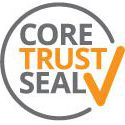- Submit data
- Submission guidelines
- Moored ADCP data
Moored ADCP data submission
BODC aims to ensure that all data incorporated into our database are adequately documented to allow long term viability and future access. Therefore, key data set information (metadata) are important for each data set we receive.
Information specific to moored ADCP data are described below. Metadata should be supplied in our metadata submission template, however we are able to accept metadata in any format. Please do not be discouraged from sending us data even if some of the information is unavailable. We fully understand that there are many reasons why the standards specified may not be completely achieved.
Instructions for general data submissions and other data types are also available.
An ADCP instrument sheet ![]() (55 KB),
(55 KB), ![]() (121 KB) may also be used.
(121 KB) may also be used.
Data standard
Ideally, data should be presented as a time series of profiles. Each profile should contain date, time, position and numerous records of data, where each record corresponds to a vertical bin in the profile. For each bin there should be the centre depth of the bin, three orthogonal velocity components, percentage good pings, the error velocity, water depth or pressure (if recorded), the echo amplitude for each beam and the average beam correlation (an average of four beams).
All relevant corrections and calibrations should be applied to the data. Data should be checked for quality and pre-edited or flagged for erroneous values.
Metadata specific to moored ADCP data
Deployment details
- The mooring type and mooring reference number.
- The ship/cruise which deployed the mooring.
- A project (if appropriate).
- Date/time of deployment/recovery for each instrument.
- Date/time of the start/end of usable data for each instrument.
- Position and method of position fix (i.e. DGPS, GPS).
- Water column depth (specify method — i.e. sounding and methodology, chart).
- Instrument depth (or height).
Instrument details
- Instrument description, number of sensors, reference number, manufacturer, model, frequency (kHz), band type (broad,narrow), heads facing upward or downward — provide a literature reference, web site reference or briefly describe. Include — accuracy, resolution and response range of individual sensors.
- Instrument configuration. Include — time between ensembles, pings per ensemble, bin size, number of bins, percentage good threshold, automated data rejection (i.e. fish rejection algorithms).
- Standard of calibration — manufacturer, laboratory, in-situ, quality, dates and calibration coefficients.
Mooring details
- Brief description or diagram of the mooring/platform structure.
Data sampling/processing
- Interval between samples and the duration of individual samples (raw data).
- Nominal interval of processed data (excluding gaps resulting from editing).
- Methods of averaging, filtering or compression.
- Gaps in the data record.
- Adjustments due to variations in calibration.
- De-spiking/smoothing/interpolating methods and editing procedures.
- Data quality report.


